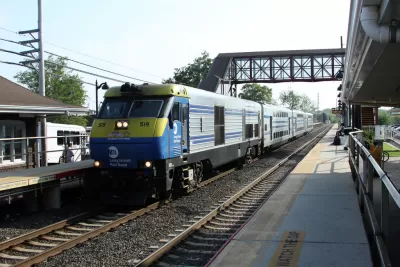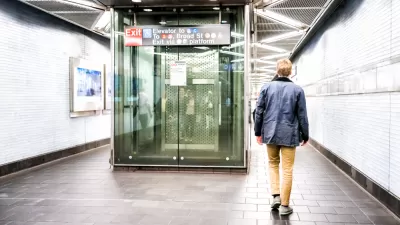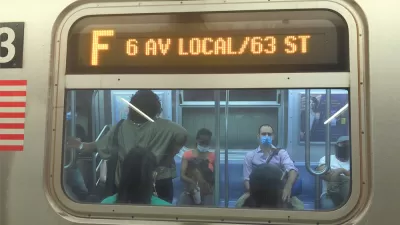Long Island's two major transit services, MTA's LIRR trains and the NICE bus system, are less coordinated than they could be. This has a big impact on ease of movement for low-income residents.

Alon Levy argues that Long Island's trains and buses suffer from a lack of coordination. The result, beyond diminished efficiency, is that low-income residents use one system while well-off commuters use another.
On one hand, "The LIRR has schedules and park-and-rides that assume passengers are affluent car owners who take the train to get to their 9-to-5 Manhattan jobs." On the other, "There's a beleaguered bus system, the Nassau Inter-County Express (NICE), formerly known as Long Island Bus. NICE ridership, already at a 15-year low five years ago, has continued to fall."
Transit on Long Island could be more efficient and equitable if the systems incorporated "fare integration, schedule integration, and integration between infrastructure and operations planning." One example of potential efficiency gains: more low-income riders could fill trains on off-hours, easing the strain on slower buses.
Levy concludes, "Can riders rely on the LIRR without memorizing a schedule? Can they use it for trips at all times of day? The lack of interest in answering these questions shows the LIRR's priority is still suburban park-and-ride passengers who go to Manhattan in the morning and return in the afternoon."
FULL STORY: On Long Island, Transit Operates as Two Separate and Unequal Systems

Planetizen Federal Action Tracker
A weekly monitor of how Trump’s orders and actions are impacting planners and planning in America.

Congressman Proposes Bill to Rename DC Metro “Trump Train”
The Make Autorail Great Again Act would withhold federal funding to the system until the Washington Metropolitan Area Transit Authority (WMATA), rebrands as the Washington Metropolitan Authority for Greater Access (WMAGA).

DARTSpace Platform Streamlines Dallas TOD Application Process
The Dallas transit agency hopes a shorter permitting timeline will boost transit-oriented development around rail stations.

Supreme Court Ruling in Pipeline Case Guts Federal Environmental Law
The decision limits the scope of a federal law that mandates extensive environmental impact reviews of energy, infrastructure, and transportation projects.

Texas State Bills to Defund Dallas Transit Die
DART would have seen a 30% service cut, $230M annual losses had the bills survived.

Bikeshare for the Win: Team Pedals to London Cricket Match, Beats Rivals Stuck in Traffic
While their opponents sat in gridlock, England's national cricket team hopped Lime bikes, riding to a 3-0 victory.
Urban Design for Planners 1: Software Tools
This six-course series explores essential urban design concepts using open source software and equips planners with the tools they need to participate fully in the urban design process.
Planning for Universal Design
Learn the tools for implementing Universal Design in planning regulations.
Roanoke Valley-Alleghany Regional Commission
City of Mt Shasta
City of Camden Redevelopment Agency
City of Astoria
Transportation Research & Education Center (TREC) at Portland State University
US High Speed Rail Association
City of Camden Redevelopment Agency
Municipality of Princeton (NJ)





























